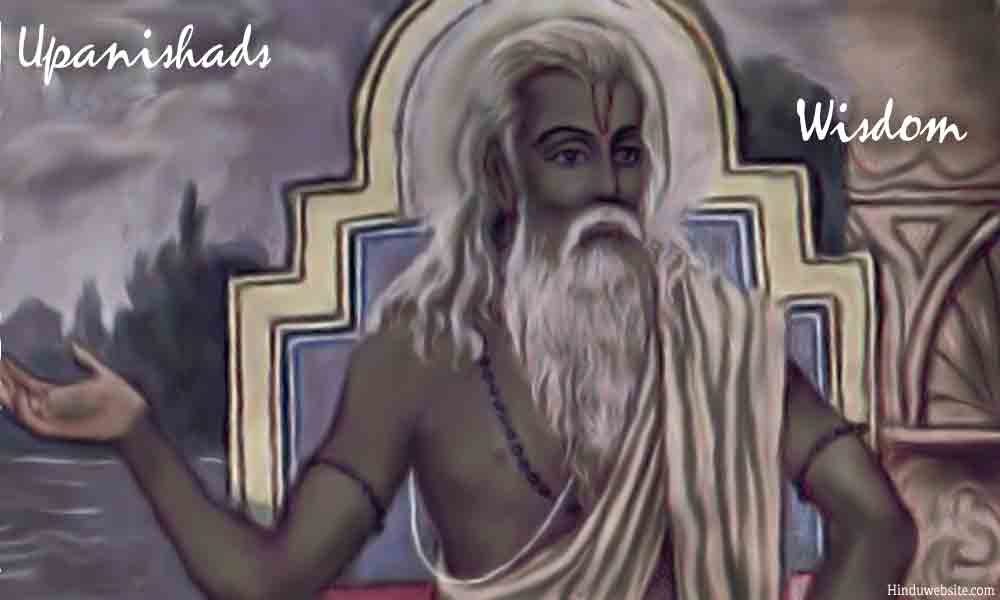
How old are the Upanishads?

Please do not look for complete answers or information in these. They are fragments of thoughts which deal with only certain aspects of the chosen subject
How old are the Upanishads? I cannot give you a definite answer to this, just as I cannot tell you when the Vedas were originally composed. If you go by the European argument they were composed around 1000 B.C.E. However, if you go by the astronomical calculations mentioned in the texts, their composition might date back to about 5000 B.C.E. Not all the Upanishads are ancient and not all the verses present in them were composed during the same time. We also do not know how many versions or recensions actually existed in the past for each of the Upanishads
Therefore, you have a problem fixing their dates. To determine their date, you have to know when each of the verses was composed and when all of the Upanishad in its current form came into existence. Some hymns from the Vedas date back to prehistoric times when the Vedic civilization was believed to have existed on the banks of the River Saraswathi in the area where presently the Thar desert exists.
The same may hold true for some ancient Upanishadic verses, especially which were drawn from the Brahmanas and the Aranyakas. This is based on the observation that the most ancient hymns of the Rigveda mention over seventy times the name of River Saraswathi, while you do not find in them any reference to the River Ganga.
The 108 important Upanishads were composed at different times. Some verses in them are very ancient dating back to three or four thousand years while some are more recent, composed during the medieval period. Since the knowledge of the Upanishads was kept secret, and passed on from person to person, under an oath of secrecy, it was preserved in different forms by various families and teacher traditions, who belonged to different Vedic schools called Sakhas (branches).
Each Veda contains one or more Brahmanas and several Upanishads. Of the four Vedas, Rigveda, Samaveda and Yajurveda are considered the original triad (Triveda). Therefore, if you are looking for the most ancient Upanishads, you have to search for them from the Upanishads belonging to these three. Some schools bear the same names as the Upanishads such as Aitareyins, Kausitakins, Taittiriyakas and Kathakaas. These schools used the same Samhitas from the triple Vedas to teach the ritual knowledge, but followed their own curriculum with regard to the Brahmanas, Aranyakas and the Upanishads.
The knowledge of the Upanishads was taught to the students in the end, after they gained sufficient mastery in the remaining three. Since the Upanishads were to be taught in the end and kept most secret, we do not have proper records to know how and when they exactly originated. The Upanishads that we have today are not necessarily the same Upanishads the Vedic scholar used in ancient times.
What we have today are remnants and loose compilations created from many sources. For example, the Chandogya Upanishad is a compilation of verses from various sources including two Brahmanas from the Samaveda. The Katha Upanishad which we have today might be a later day recreation of the original text or a legend that existed in the Rigvedic period in which a father sacrificed his own son in a Vedic ritual (Naramedha).
Therefore, most of the Upanishads that we read today contain verses composed at different times. Some Upanishads do not form part of the Vedas and yet qualify as Upanishads. For example the Bhagavadgita is considered an Upanishad. The knowledge of the Upanishads is also found in some Puranas and many Tantras as conversations between divinities. << >>
Suggestions for Further Reading
- What are The Upanishads?
- How old are the Upanishads?
- Exploring the universe the Upanishadic Way
- Which Upanishads One Should Read?
- Who Composed The Upanishads?
- Women in the Upanishads
- Mahavakyas in Your Daily Life
- Sexual Morality in the Upanishads
- Krishna in the Upanishads
- Follow Angirasa as Your Guru as Krishna Did
- How Many Times Do You Reincarnate?
- Are The Upanishads Better Than Modern Psychology?
- Popular Misconceptions About The Upanishads
- Popular Themes of the Upanishads
- The Difference Between Devas And Asuras, Or Between Gods And Demons
- What Brings You Prosperity And Fame?
- Birth and Conception in Hinduism
- The Wisdom of the Upanishads, Main Page
- Essays on The Upanishads
- Upanishads Home Page from Hinduwebsite.com
- Links To Translations of the Upanishads
- List of 108 Upanishads According To The Muktikopanishad
- Introduction to the Upanishads of Hinduism
- A Brief Introduction to the Upanishads
- Essays On Dharma
- Esoteric Mystic Hinduism
- Introduction to Hinduism
- Hindu Way of Life
- Essays On Karma
- Hindu Rites and Rituals
- The Origin of The Sanskrit Language
- Symbolism in Hinduism
- Essays on The Upanishads
- Concepts of Hinduism
- Essays on Atman
- Hindu Festivals
- Spiritual Practice
- Right Living
- Yoga of Sorrow
- Happiness
- Mental Health
- Concepts of Buddhism
- General Essays